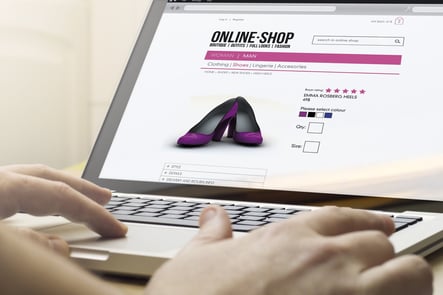
We all know that if you want to sell a product online, you need images. And not just any image- high quality images are very important.
Have you ever gone to someone’s eBay listing or shopped online and saw posts that offered a robust description of an item but featured no photos of it or the photo was blurry?
What’s your first thought when you see that?
We don’t know about you, but the first thought that jumps into our minds is a suspicious “Why?”
Why wouldn’t they include a photo or a high quality photo for those websites that have poor imagery? Do they have something to hide? Are they BS-ing us about the condition of the product? Do they not realize the increase in a conversion with a high quality photo versus a poor quality one?
As soon as that idea appears, it plants itself like a weed and is nearly impossible to remove. The sale is pretty much dead at that point, never mind how much effort the seller put into their product description.
Product Images Power Your Business
It would be hard to call product images a “secret” to ecommerce success, as most retailers these days know how important they are. And with the above scenario in mind, it’s not hard to understand why. But while every seller needs to dodge the bullet of suspicion, the psychology of images goes deeper than that.
1. Images give us instant information
Humans are visual by nature. While there’s some debate over how much faster our brains transmit visual information when compared to text, there’s no argument that it’s faster—the old adage “a picture’s worth 1,000 words” is certainly based in truth.
A single snapshot of a product can provide more relevant information about the product’s quality than paragraphs of text. Why break your back describing a products dimensions, colors, shape, and designs when a single photo can do the job for you? Plus, images provide a natural sense of scale and help customers get familiar with your item before they buy.
2. Images help us scan
Few of as actually read the pages we visit. Research by Nielson Norman shows that a miniscule 16 percent of readers actually read word-for-word—79 percent just skim for the highlights. And when online shopping across a diverse network of ecommerce retailers, we’re guessing this 16 percent is even lower. For many people no images means no go.
Images show readers what you have to offer without making them commit. If you have great photos of great products, they’ll stick around to read the details.
3. Images are shareable
In our social-media crazy world, sharability has become a type of currency. Many socially-savvy shoppers talk about their purchases and share their experiences on social media—and if they happen to share your images, your brand gets more exposure. Reports by Gartner indicate that 74 percent of the population rely on social networks for information about purchasing decisions, information that includes what their friends share, repost, and pin.
Nobody will share a text-based product description, but sites like Instagram are prime for hosting photos of your merchandise. It’s free advertising, really.
4. Images are SEO Friendly
Optimizing on-page text is great, but images can boost your page’s SEO value even further. Each image includes file names and alt-text that can be tailored to improve your page’s organic search ranking by giving search indexers more information to pull from. Think of it as the cherry on top of all the other benefits images provide.
Dust Off That Camera
The benefits of images for your ecommerce site are almost too numerous to list in a single article.
Even if you don’t have a website, you can try it for yourself—go on eBay and make one listing with a photo and one without. The difference in consumer interest is astounding and applies to all ecommerce retailers. Images give users confidence in the product they’re considering, and removes that dreaded “no photo listed” suspicion as a matter of course.


